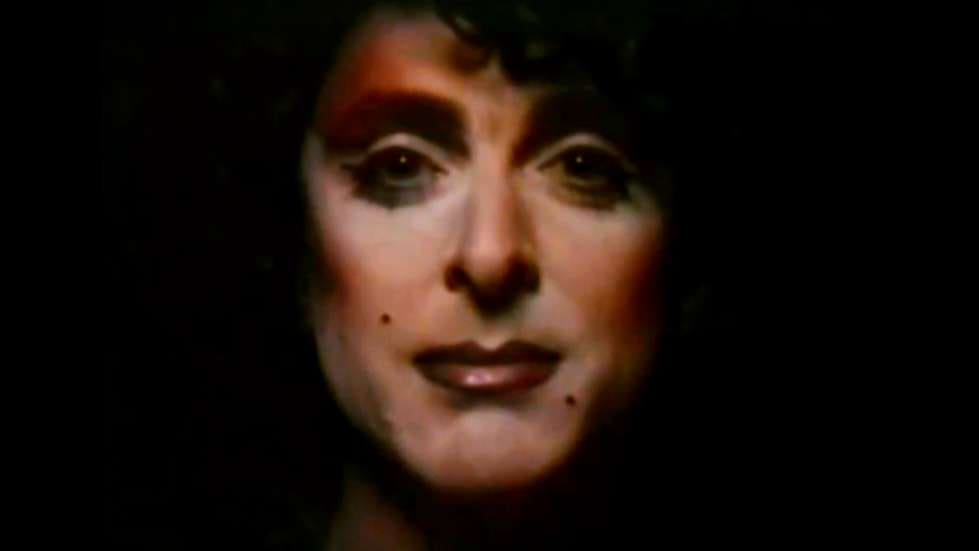
Regardless of whether you watch RuPaul’s Drag Race or not, it’s hard to deny that as an art form, drag has never been more popular. Though most know RuPaul as a glamorous queen fully committed to delivering a female fantasy, considerably less know much about his early days in New York City, when his drag was a little more experimental and subversive. A lot of footage from that time is available free on YouTube thanks to the 5ninthavenueproject and director Chris Moukarbel (GAGA: Five Foot Two) uses that archive to his advantage in his new documentary, Wig. In one remarkable piece of footage, RuPaul, Drag Race co-creator Fenton Bailey and legendary drag queen, Lady Bunny question whether drag could ever really become mainstream when the whole point is to challenge the status quo. As it happens, Wig itself asks that same question.
Though the title recalls the popular use of the word in the modern queer community, here, it refers to the annual festival, Wigstock, which Bunny and others organized in New York City’s Lower East Side from 1984 to 2001. After 9/11, as Bunny herself explains, Mayor Rudy Giuliani’s crack down on the city’s nightlife changed the sense of community in both the city and the local drag world and the queens no longer felt the festival fit with the NYC’s changing character. That is, until September of last year, when Bunny, some of the queens from Wigstock’s original run and young queens like Bobbie Hondo, who moved to NYC because of the festival, brought the day-long drag show back to life.
However, while it initially seems that revival and the history behind it will be the film’s focus, Moukarbel quickly abandons that thread and it can be a frustrating bait-and-switch for those who come to the film hoping for in-depth information about how Bunny and the other queens pulled it off each time. We hear Bunny say, “Every year, it felt like it doubled, but I was too stupid to ask for help,” but we never hear about anything she did to deal with that problem. We also never get details on how Bunny and the other queens organized and booked performers for Wigstock’s revival and it can leave the festival feeling like a thin excuse to talk about drag in general.
Though present day RuPaul never appears onscreen outside of Drag Race footage, what he’s done to bring drag into the mainstream feels like a constant presence in the film. For some, that influence is a negative. Though legendary queen, Linda Simpson admits the show, “created this incredible renaissance for drag,” she also laments that, “there’s no secrets now.” As she puts it, thanks to Drag Race, everyone knows how the queens transform and everyone knows the language and it no longer feels specific and exclusive. However, not everyone in the community feels that way. As two-time Drag Race contestant, Naomi Smalls says, “I love that it’s been normalized.” It’s a tension we see over and over between young and old, mainstream and subversive queens throughout the film and more than the actual festival, exploring that tension eventually becomes Moukarbel’s main concern.
That said, while he presents both perspectives on drag, Moukarbel doesn’t necessarily suggest one has more value than another. However, it’s impossible to deny there is a clear difference between the drag represented by Wigstock’s past and Drag Race’s present—at least as they’re shown here. In one bit of archival footage, we watch drag legend, Leigh Bowery, stomp around the Wigstock stage in what looks like some sort of grotesque fat suit before laying down on a table and then letting an adult human dressed as a fetus–umbilical cord and all–burst from his crotch. Manila Luzon wasn’t even allowed to wear a dress made to look like a bloody maxi pad in All Stars 4 and it’s impossible to imagine the show airing anything as subversive as what Bowery does.
Knowing that, it’s then fascinating to watch the performances we do see from Wigstock’s revival. Though we only see parts of the hours-long show, the performers featured somehow encapsulate every strain of drag that Moukarbel has explored thus far. We see Bunny do a number making fun of Drag Race’s most distinct tropes, but we also see some of the show’s contestants and winners take the stage too. There’s Bianca Del Rio doing crowd work in the daytime, Alaska Thunderfuck performing with backup dancers and Latrice Royale looking as resplendent as ever. On the same stage where Neil Patrick Harris (who co-produced the film) reprises his role from Hedwig and the Angry Inch in an ultimate expression of the mainstreaming of subversive queer art, we later see Charlene Incarnate (a trans queen who calls queens the “spiritual masters of the gay community” and appears throughout) go full frontal during a performance of Cher’s “Just Like Jesse James.”
In the end, for all the queens’ handwringing about authenticity and where drag is headed, it’s Wigstock itself that suggests that there is simply no need for the tension between different types of drag at all. Rather, Wig emphasizes that all types of drag can coexist. And while that subculture may lose some of its intimacy, widening the community also means that a wider audience will be able to find drag that speaks to them. Sure, some will never learn the history of the art, but for people like Bobbie Hondo, who wears the same outfit Mistress Formika wore to Wigstock 1994 in part because that was the year they were born, synthesizing drag’s history with its future seems beautifully effortless.
Wig premieres on HBO on June 18.

